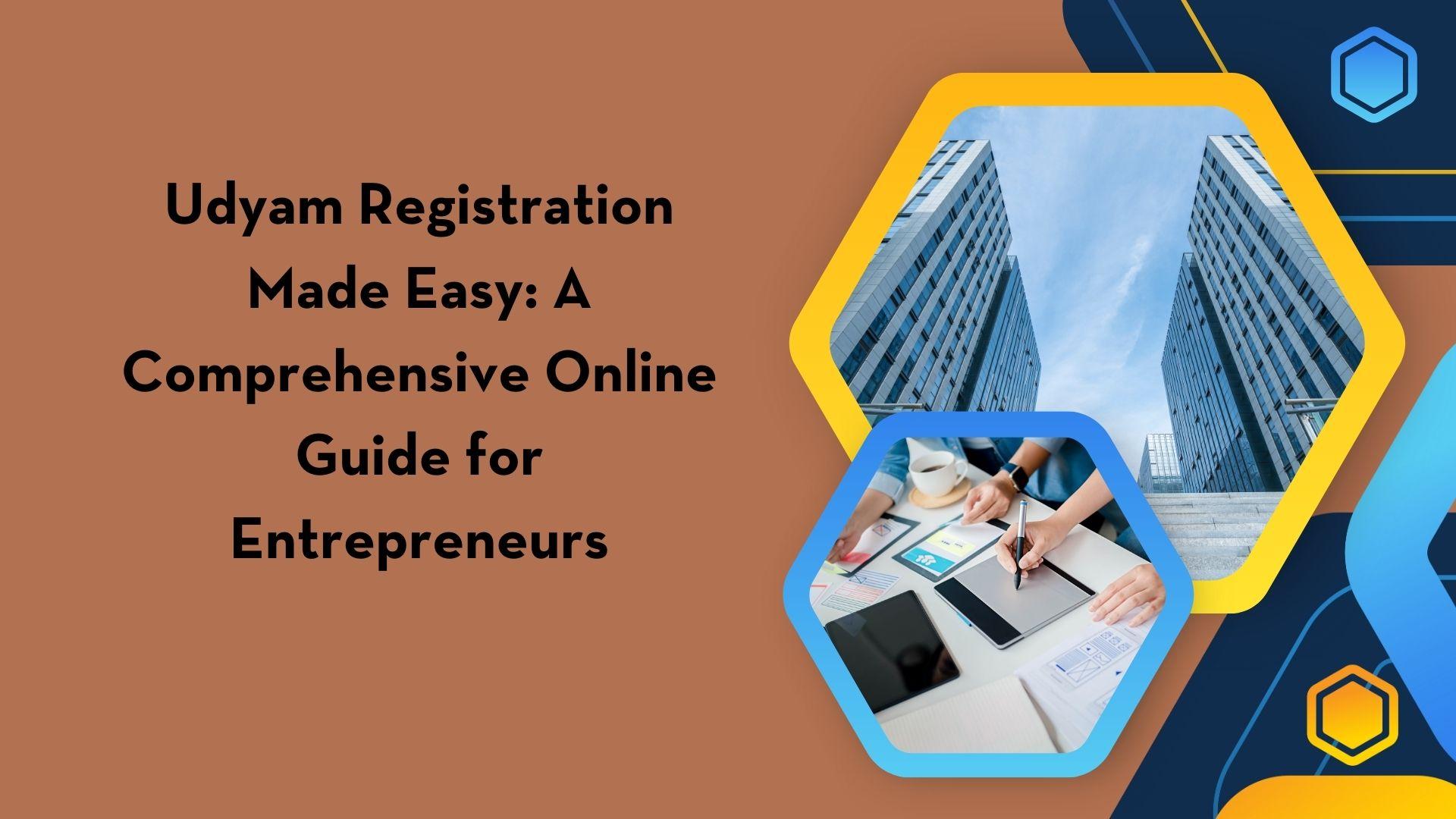In the dynamic landscape of business, small and medium enterprises (SMEs) play a pivotal role in fostering economic growth and employment opportunities. Recognizing the significance of these enterprises, the Indian government introduced the Udyam Registration portal, a streamlined and online process aimed at simplifying the registration for micro, small, and medium enterprises (MSMEs). This comprehensive guide is designed to walk entrepreneurs through the Udyam Registration process, providing insights, step-by-step instructions, and key considerations for a seamless experience.
Understanding Udyam Registration:
Udyam Registration is a government initiative introduced by the Ministry of Micro, Small, and Medium Enterprises, India, to provide a unique identity to MSMEs. The registration is applicable to enterprises involved in manufacturing or service activities. It replaces the earlier system of registration known as Udyog Aadhar, aiming to bring more transparency and ease of access for entrepreneurs.
Advantages of Udyam Registration:
Before delving into the online registration process, it’s crucial to understand the benefits that Udyam Registration brings to the table for entrepreneurs:
Easy Access to Credit:
Udyam Registration facilitates easier access to credit by creating a credible and verifiable database of MSMEs. Financial institutions often rely on Udyam Registration to assess the creditworthiness of enterprises.
Government Subsidies and Schemes:
Registered MSMEs can avail themselves of various government subsidies, schemes, and incentives. This registration is a gateway to accessing the support and benefits provided by the government to promote the growth of small businesses.
Priority in Government Procurement:
Enterprises with Udyam Registration receive priority in government procurement, providing them with enhanced business opportunities and a competitive edge in securing government contracts.
Protection Against Delayed Payments:
Udyam Registration ensures a quicker resolution in case of delayed payments from buyers, as registered businesses can lodge complaints against such delays on the MSME Samadhan portal.
Technological Upgradation and Quality Certification:
The registration encourages MSMEs to adopt modern technologies by providing subsidies for technology upgradation. It also facilitates reimbursement for obtaining ISO and other quality certifications.
Navigating the Udyam Registration Process:
Now, let’s delve into the step-by-step process of Udyam Registration to help entrepreneurs navigate the online platform efficiently.
Step 1: Eligibility Check
Before initiating the registration process, entrepreneurs should ensure that their business falls under the definition of micro, small, or medium enterprises as per the criteria set by the government. The classification is based on investment in plant and machinery or equipment for manufacturing enterprises, and on the investment in equipment for service enterprises.
Step 2: Accessing the Udyam Registration Portal
Entrepreneurs can access the Udyam Registration portal by visiting the official website. The portal is user-friendly and designed to guide users through the registration process with ease.
Step 3: Basic Information Entry
The initial step involves entering basic details such as the entrepreneur’s name, Aadhar number, and PAN details. It is essential to ensure that the information entered is accurate and matches the official documents.
Step 4: Business Details
Entrepreneurs need to provide information about their business, including its name, type, and location. It is crucial to accurately enter the business’s official address, as it will be used for communication and verification purposes.
Step 5: Investment Details
This step requires the entrepreneur to provide details about the total investment in plant and machinery or equipment, depending on the nature of the business. The investment amount determines the classification of the enterprise as micro, small, or medium.
Step 6: Additional Information
Entrepreneurs may need to furnish additional information related to the industry segment, specific details about the products or services offered, and employment details. Providing accurate and comprehensive information in this section is vital for a successful registration process.
Step 7: Submission of Documents
The Udyam Registration process involves uploading certain documents, including the entrepreneur’s photograph and relevant business documents. These may include documents such as the business’s incorporation certificate, partnership deed, or any other document that validates the information provided during registration.
Step 8: Verification and Submission
After completing the data entry and document submission, entrepreneurs should carefully review the information provided. Once satisfied, they can submit the registration application. The portal will generate a unique Udyam Registration Number upon successful submission.
Step 9: Acknowledgment and Certificate
Entrepreneurs will receive an acknowledgment for their registration application, along with a certificate bearing the Udyam Registration Number. This certificate serves as proof of registration and is essential for availing the benefits and schemes associated with Udyam Registration.
Note : print udyam application
Conclusion:
Udyam Registration is a significant step towards empowering MSMEs in India, providing them with a unique identity and access to a myriad of benefits and opportunities. By following this comprehensive online guide, entrepreneurs can navigate the registration process with confidence, ensuring that they harness the full potential of the initiatives and support offered by the government for the growth and sustainability of their businesses. As the business landscape continues to evolve, Udyam Registration stands as a testament to the government’s commitment to fostering a thriving ecosystem for small and medium enterprises in the country.



